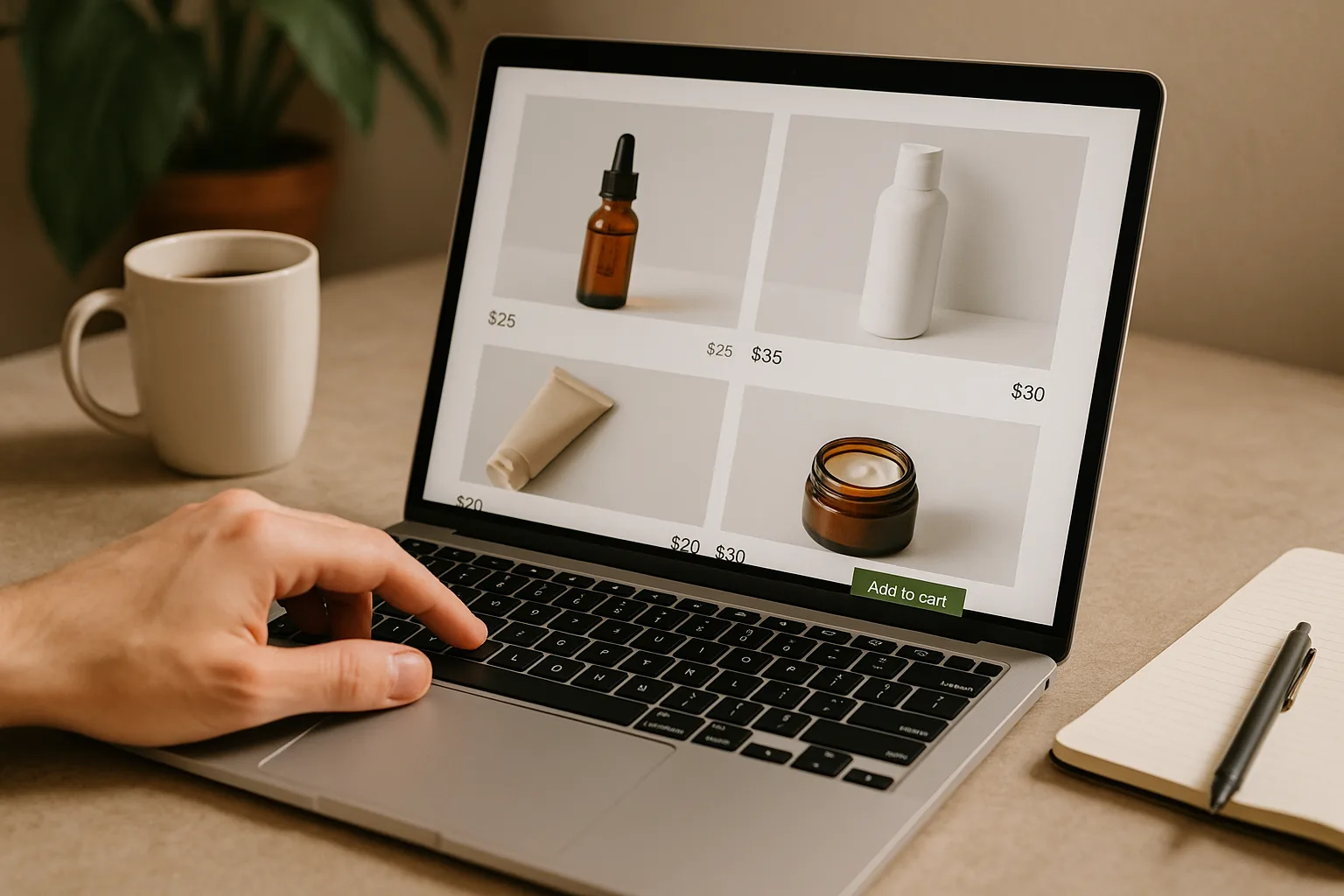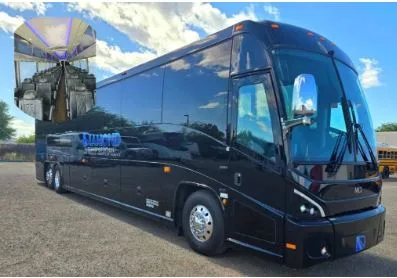Conversion-Focused Design Isn’t Optional for D2C Brands Anymore
Acquisition costs continue to rise while shopper patience continues to shrink, so conversion-focused design is no longer a nice-to-have for D2C brands; it is the make-or-break lever for profitable growth. The Baymard Institute estimates the average online cart abandonment rate hovers around 70 %, which means most visitors who show purchase intent still drop off before paying.
Every extra tap, slow image, or buried returns policy is a leak in the bucket that drains revenue before it ever hits the ledger. The brands that win make buying effortless with clear value props above the fold, trust cues at key decision points, mobile-first UX, and pages that feel instant.
This article shows how to turn more of today’s traffic into tomorrow’s revenue with practical design moves that lift conversion rate and average order value in weeks, not quarters.
Why Conversion-Focused Design is No Longer Optional
Conversion-focused design is non-negotiable for D2C because traffic continues to become more expensive. In contrast, shopper attention becomes shorter, and profit depends on converting the clicks already earned into orders and repeat revenue. The brands that win treat design as a sales engine, not a paint job.
Rising Competition & Expectations
D2C brands face unprecedented competition today. Customers expect Amazon-level user experiences from every online store. They compare your checkout process to industry leaders. They abandon sites that feel outdated or clunky.
Social media and eCommerce Web Design services have raised the standards. Instagram and TikTok showcase beautiful product presentations daily, and customers now expect this visual quality from brand websites. Poor design signals unprofessional operations.
Paid is Pricier
Ad costs keep inching up while attention is stuck at the same 24 hours, which means every visit has to work harder. If the page is slow or vague, that spend evaporates before a shopper even sees the offer.
If you’re looking for a conversion optimization strategy, make each click count with crystal-clear value props above the fold, snappy load times, and one obvious next step with performance driven web designs. Quick-add on collections, sticky add to cart on PDP, and upfront shipping and returns reduce hesitation where it matters.
Signal Loss Hurts
Privacy shifts have blurred targeting and attribution, so ad platforms cannot carry the full load anymore. The moment a visitor lands, the site needs to do more of the selling and guiding.
Use consented data to personalize experiences without being creepy. Strong on-site signals, smart quizzes, and clean events help tailor merchandising and offers in real time.
Mobile is Ruthless
On a small screen, patience is short and comparisons are one swipe away. If benefits do not pop up and checkout is clunky, shoppers bounce to the next tab.
Design for scanning with short headlines, benefit-first bullets, and tap-friendly buttons. Show delivery dates, returns, and social proof early so doubts do not have time to grow.
Scale Needs Efficiency
Pouring budget into a leaky customer journey optimization just multiplies waste. The fastest wins come from fixing the highest-friction steps first.
Run a simple weekly test cadence and measure revenue per visitor by template and device. Lift PDP to cart, checkout start, and completion before pushing spend harder.
What Conversion-Focused Design Means
Conversion-focused design means every pixel, word, and interaction exists to help a shopper understand value quickly and take the next step with zero friction. It is not about pretty ecommerce designs for D2C; it is about clear paths that reduce doubt, surface proof, and make buying feel effortless.
- Clarity Over Cleverness: Say exactly what the product is, who it is for, and why it is better, then give one obvious action to take. Lead with benefit-first headlines, plain-language microcopy, and a primary CTA that stands out without competing elements.
- Remove friction everywhere: Make navigation intuitive, search forgiving, and filters match how people make decisions, such as by size, color, use case, and fit. On PDPs and checkout, show delivery dates, returns, sizing, and total cost upfront, use express wallets, and keep forms short with smart defaults.
- Use persuasion architecture: Guide attention, then build interest with scannable bullets, strong visuals, and simple comparison points. Close the loop with proof where it matters, such as reviews, UGC photos, certifications, and press, followed by a single clear call to action.
- Be data-led and test-driven: Instrument key steps, such as adding to cart, checkout start, and completion, then watch where momentum drops. Turn insights into simple hypotheses, run clean A/B tests, and roll proven wins into reusable components and templates.
Key Elements of Conversion-Focused Design
Website designs for D2C growth share common design elements that drive conversions. These components work together to create seamless shopping experiences. Each element serves specific psychological and practical purposes.
Clear Value Proposition
State exactly what the product is, who it is for, and the core outcome it delivers within the first view. Specific, outcome-oriented language prevents ambiguity and accelerates decision-making. Support with one or two concise proof points, such as a key result, credential, or differentiator, to reinforce credibility.
Pair the message with one prominent primary action and avoid competing links in the same visual field. Keep the visual hierarchy disciplined so attention naturally progresses from headline to supporting copy to action without detours.
Mobile First Design
Assume discovery and purchase decisions occur on a phone and structure layouts accordingly. Present price, primary benefits, and the main action within the first scroll to minimize effort. Use thumb-friendly tap targets, clear spacing, and sticky controls that reduce the need to navigate back and forth.
Keep copy scannable with short lines and benefit-led bullets that answer common questions rapidly. Optimize imagery and defer nonessential scripts to ensure responsive interactions on typical mobile networks.
Optimized Speed and Stability
D2C eCommerce Solutions that include Fast, stable pages expand the available attention window and improve perceived quality. Prioritize critical content so it renders first, compress and resize media, and remove unused third‑party apps that add weight. Aim to minimize layout shifts so elements do not jump as the page loads.
Monitor performance by template and device, since bottlenecks often differ between the homepage, collection, PDP, and checkout. Resolve the heaviest offenders first to produce immediate gains in engagement and conversion.
Persuasive Product Pages
Lead with outcomes customers value, then support with essential features, specifications, and pricing. The initial screen should answer what the product does, why it is different, and how to proceed. Place high‑quality visuals—lifestyle, detail, and scale—where they clarify benefits, not merely aesthetics.
Address hesitation proactively with delivery dates, returns, sizing or fit guidance, and in‑context FAQs near the decision zone. Elevate credible reviews and UGC close to the action to reinforce confidence at the moment commitment is considered.
Strong Calls to Action
Treat CTAs as commitments, not decorations. Use a single primary CTA per screen with clear, verb‑led labels such as “Add to Cart,” “Start Trial,” or “Select Size,” and maintain consistent style and color across templates. Ensure adequate contrast, generous hit areas, and proximity to price and key benefits.
On mobile PDPs, use a sticky CTA so action is always available, and include concise microcopy beneath the button to reduce perceived risk, such as delivery windows or free returns. Avoid equal‑weight secondary buttons; if alternatives are necessary, render them as text links to preserve focus.
Streamlined Checkout
Minimize steps and fields from cart to confirmation, and present a clear cost summary that includes shipping and taxes before payment. Enable popular express wallets, use auto‑complete, and validate inline to prevent re-entry. Preserve progress and handle errors gracefully so momentum is not lost.
Reinforce trust at key moments with visible policies, recognizable payment badges, and accessible support options. Ensure warranties and returns are transparent and easily accessible, which reduces perceived risk and supports confident completion.
Common Mistakes D2C Brands Make
Common website problems destroy conversion rates across D2C brands. These issues appear repeatedly in site audits. Identifying and fixing these problems should be your first priority.
Here are frequent issues that quietly depress conversion for D2C stores, along with practical ways to resolve them before scaling traffic or spend.
- Unclear value proposition: When the first screen does not convey what the product is, who it serves, and why it is better, visitors hesitate. Lead with a concise promise and one primary action to guide the next step.
- Desktop-first layouts: Most sessions are mobile, yet many decisions are made on wide screens. Prioritize thumb-friendly controls, sticky add to cart, concise copy, and lightweight media on phones.
- Slow pages: Heavy apps and unoptimized images increase abandonment. Remove nonessential scripts, compress assets, and monitor performance by template to keep interactions fast.
- Unanticipated costs: Late-stage shipping fees or hidden return terms disrupt intent. Present delivery windows, total cost, and return policy early to set expectations and build trust.
- Insufficient social proof: Generic star ratings without context rarely reassure. Elevate photo reviews, ratings distributions, certifications, and credible press near key decisions.
- Unstructured navigation: Menus that reflect internal org charts confuse shoppers. Organize by buyer logic, enable helpful autosuggest, and align filters to size, fit, and use case.
- Checkout friction: Excessive fields and missing express wallets cause drop‑offs. Offer popular wallets, use auto-complete and inline validation, and limit forms to essentials.
- Excessive popups: Stacked prompts interrupt browsing and devalue offers. Use a single, high‑value capture with respectful timing and a clear benefit.
- Undifferentiated merchandising: Showing the same modules to every visitor wastes attention. Tailor content by intent and behavior; highlight bestsellers, bundles, and replenishment where they are most relevant.
- Insufficient trust signals: Opaque warranties or hard‑to‑find contact options erode confidence. Add recognizable payment marks, transparent policies, and quick access to human support where doubts arise.
- Inaccessible design: Low contrast, small texts, and unlabeled images exclude potential buyers. Improve contrast and typography, add alt text, structure headings, and support keyboard navigation.
- Inaccurate urgency signals: Countdowns or stock notices that do not reflect reality damage credibility. Use honest availability cues, clear timelines, and transparent promotions that respect customer expectations.
Checkout Process Improvements That Drive Conversions
The fastest conversion gains at checkout come from removing friction, clarifying costs, and making payment effortless at the moment of highest intent. For eCommerce conversion optimization, focus on a few fundamentals and keep the experience consistent across devices.
Remove Account Barriers
Mandatory account creation is a common dropout point, especially on mobile. Allow guest checkout by default, then invite account creation after order confirmation when motivation is higher and addresses are already saved.
Explain the value of an account in practical terms—faster reorders, saved details, and easy returns—so the invitation feels like a benefit, not a hurdle. Keep the post‑purchase prompt lightweight and skippable to preserve momentum.
Compress Payment Steps
Express wallets such as Shop Pay, Apple Pay, and Google Pay reduce steps and typing, which is critical on small screens. Place these options prominently near the order summary so the fastest path is immediately visible.
Use one clear primary call to action per step with verb‑led labels (for example, Continue, Pay now, Place order). Maintain consistent color and placement, and keep a sticky CTA on mobile so action remains available without excessive scrolling.
Make Forms Effortless
Ask only for the information required to fulfill the order, and infer what can be derived from other fields. Implement address auto‑complete, auto‑format for phone and card numbers, and the correct mobile keyboard for each input to reduce errors and speed entry.
Validate inline with specific, courteous messages and position them adjacent to the relevant field. Preserve progress across steps and allow in‑place edits to shipping, billing, and cart items so corrections do not force a restart.
Eliminate Last‑minute Surprises
Present a complete cost summary before payment to set clear expectations. Show expected delivery dates and returns eligibility next to the total so reassurance sits beside commitment.
Keep the discount entry simple and confirm success immediately with the adjusted total. Reinforce trust with recognizable payment badges, concise policy links, and quick access to support, ensuring questions can be resolved without abandoning the flow.
Conclusion
Conversion-focused design has evolved from a nice-to-have to a business necessity for D2C brands. With 70% of shopping carts abandoned, brands cannot afford design elements that create friction or confusion.
The path forward requires systematic attention to user experience details. Start with the biggest conversion killers, such as slow loading times and poor mobile experiences. Implement guest checkout and modern payment options. Test changes methodically and build on successful improvements. Seems to much to do on your own? You can contact a credible conversion Rate Optimization service provider to help you boost the conversion while you ensure the quality of your products is top-notch.







